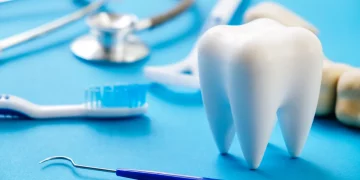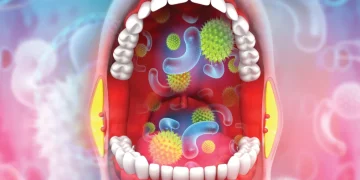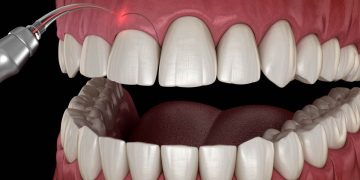The experience is universally unsettling: you’ve brushed meticulously, flossed thoroughly, and used mouthwash, yet a persistent, unpleasant odor seems to linger on your breath. This frustrating scenario points to a crucial truth often overlooked in oral care marketing: the mouth is not an isolated ecosystem. It is the opening to a complex network of systems within the body, and bad breath, or halitosis, can be the first visible—or rather, smellable—sign of an issue originating far beyond the teeth and gums. While poor oral hygiene is the leading cause of transient bad breath, what happens when a minty fresh clean is only a temporary mask for a deeper problem?
Chronic halitosis that resists standard dental care is often a messenger, and learning to interpret its signal is key to finding a lasting solution. This article will venture beyond the toothbrush to explore the three primary systemic sources of stubborn bad breath: the intricate link between digestive health and the oral cavity, the hidden role of chronic sinus and tonsil issues, and the sobering connection between persistent bad breath and underlying systemic diseases. Understanding these pathways is the first step toward truly addressing the root cause.
The Gut-Mouth Axis: How Digestive Health Manifests on Your Breath
The digestive tract begins at the mouth, and problems anywhere along its length can literally travel back up. The most direct link is through the esophagus, which acts as a two-way street for gases and microscopic particles.
GERD and Silent Reflux:
Gastroesophageal Reflux Disease (GERD) and its more subtle cousin, Laryngopharyngeal Reflux (LPR or “silent reflux”), are prime culprits. In these conditions, the lower esophageal sphincter doesn’t close properly, allowing stomach contents—including stomach acid and partially digested food—to flow backward.
- The Mechanism: When this acidic, fermented mixture refluxes into the esophagus and throat, it coats the surfaces with a foul-smelling film. The odor from this coating is then carried on the breath with every exhalation. Unlike classic GERD with heartburn, silent reflux may not cause noticeable stomach discomfort, making bad breath its primary or only symptom.
- The Smell: This often produces a sour, acidic, or vaguely vomit-like odor that mints and brushing cannot eliminate, as the source is constantly replenished from below.
Gut Dysbiosis and SIBO:
The balance of bacteria in your gut plays a surprising role in oral odor. An overgrowth of certain bacteria, such as in Small Intestinal Bacterial Overgrowth (SIBO), can produce significant amounts of smelly gases as a byproduct of fermentation.
- The Mechanism: These gases, including hydrogen sulfide (which smells like rotten eggs) and methane, can be absorbed into the bloodstream through the intestinal wall. Once in the blood, they travel to the lungs, where they are exchanged in the alveoli and exhaled directly as bad breath. This is a form of “blood-borne halitosis” that no amount of oral cleaning can fix.
- The Smell: This can lead to a fecal or rotten egg-like odor on the breath, a clear sign that the problem originates in the digestive system.
Constipation and Bowel Obstructions:
When waste moves too slowly through the colon or is physically obstructed, the prolonged bacterial fermentation can produce potent odors that can permeate systemically or, in severe cases, be regurgitated.

The Nasal Network: Sinus and Tonsil Issues as Hidden Reservoirs
The mouth is anatomically connected to the nasal passages and throat, creating shared spaces where bacteria and debris can fester away from the reach of a toothbrush.
Chronic Sinusitis and Post-Nasal Drip:
The sinuses are air-filled cavities in the skull. When inflamed or infected (sinusitis), they produce a thick, stagnant mucus that is a perfect breeding ground for anaerobic bacteria. These bacteria thrive in low-oxygen environments and produce volatile sulfur compounds (VSCs) that are exceptionally foul-smelling.
- The Mechanism: This infected mucus drips down the back of the throat—a symptom known as post-nasal drip. It coats the tongue and tonsils, providing a constant source of fuel for odor-producing bacteria in the mouth. The breath may carry a distinct, cheesy, or foul-sweet odor characteristic of bacterial sinus infections.
- The Confirmation Test: A tell-tale sign of a sinus origin is if the odor is stronger when you exhale through your nose than through your mouth.
Tonsil Stones (Tonsilloliths):
The tonsils are lined with crypts—small pockets and folds. Food particles, dead cells, and bacteria can become trapped and concentrated in these crypts, hardening into pale, foul-smelling clumps known as tonsil stones.
- The Mechanism: These stones are composed of putrefying biological material, and they release a persistent, rotten odor as they sit in the tonsil crypts. They can be a chronic issue for some people, causing bad breath that seems to come from the very back of the throat. They are often visible as white or yellow spots on the tonsils.
The Systemic Signal: When Bad Breath Points to Underlying Disease
In some cases, persistent bad breath is not a localized issue in the gut or sinuses, but a symptom of a broader metabolic or systemic condition. The breath can act as a diagnostic window, releasing specific odors associated with certain diseases.
Diabetes and Acetone Breath:
In a person with diabetes, the body’s inability to use glucose for energy can force it to burn fat instead, a state known as ketoacidosis (DKA). This process produces acidic ketones, one of which is acetone.
- The Smell: Acetone is excreted through the breath, producing a distinctive, sweet, or fruity odor often compared to nail polish remover or rotten apples. This is a medical emergency that requires immediate attention.
Liver Failure and Fetor Hepaticus:
A severely compromised liver cannot effectively filter out toxins from the blood. One such toxin is dimethyl sulfide.
- The Smell: The buildup of this compound leads to a very specific type of breath odor known as fetor hepaticus. It is described as a sweet, musty, or mousy smell and is a sign of advanced liver disease.
Kidney Failure:
When the kidneys fail, they can no longer filter urea from the blood. The body then finds other ways to excrete it, including through saliva. Bacteria in the mouth break down this urea into ammonia.
- The Smell: This results in a breath that smells like urine or ammonia, a clear indicator of uremia, the buildup of waste products in the blood due to kidney failure.
Respiratory Infections:
Infections in the lower respiratory tract, such as bronchitis, pneumonia, or bronchiectasis, can cause bad breath. The odor arises from the necrotic (dead) tissue, infected mucus, and the metabolic byproducts of the bacteria causing the infection deep within the lungs.
Conclusion: Listening to What Your Breath is Telling You
Chronic bad breath that persists despite impeccable oral care is rarely a trivial matter. It is a symptom demanding investigation. By recognizing that the mouth is a gateway, we can follow the scent trail to its true source. Whether it leads to the gut, revealing reflux or dysbiosis; to the sinuses, uncovering a hidden infection; or points systemically to a metabolic condition like diabetes, the message is the same: your body is asking for help.
Addressing this type of halitosis requires a collaborative approach. Your dentist can rule out oral causes, but a physician, gastroenterologist, or ENT specialist may be needed to diagnose and treat the underlying condition. By listening to this often-ignored signal, you can not only achieve truly fresh breath but also take a proactive step toward safeguarding your overall health.













































Discussion about this post